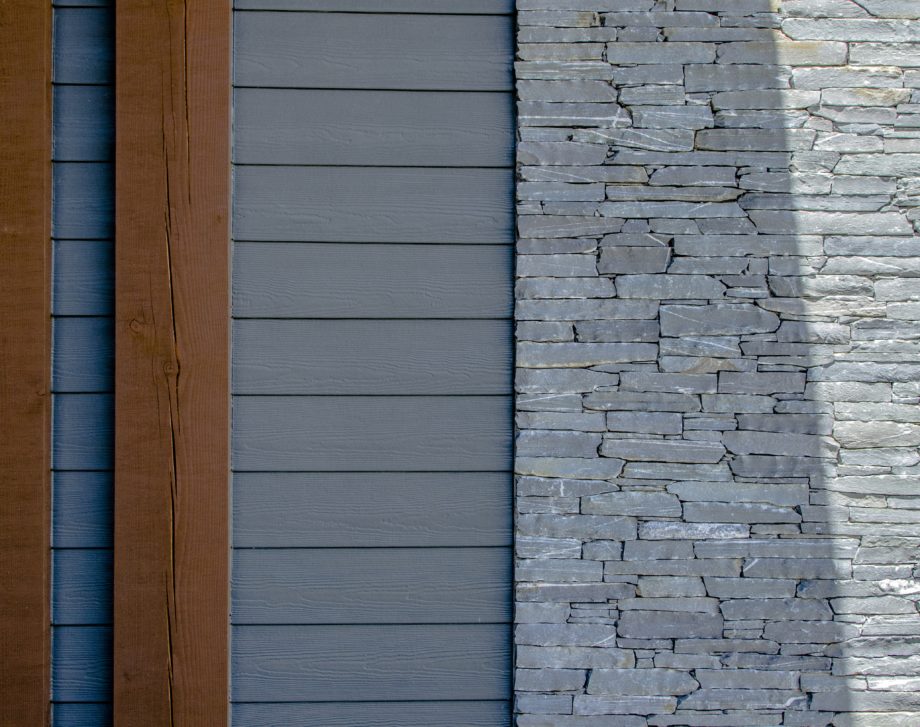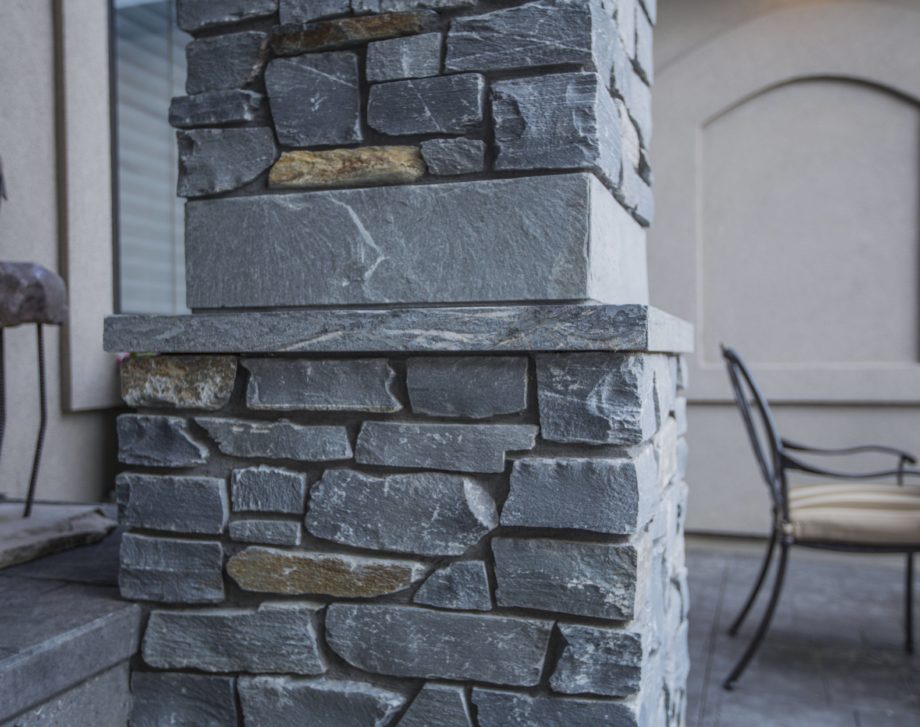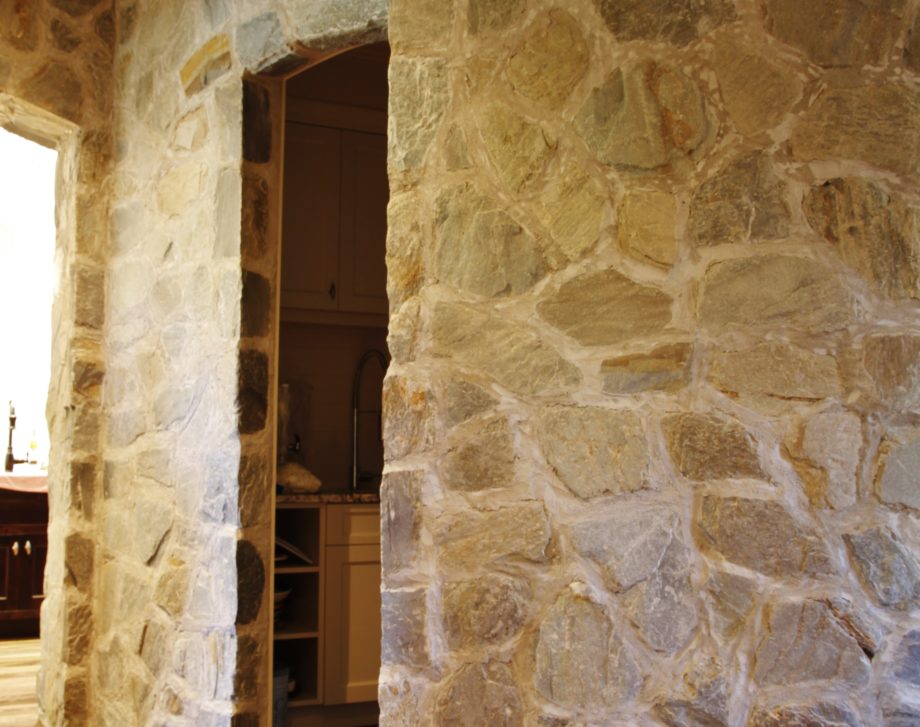In addition to a wide range of natural stone profiles and products available for enhancing interior and exterior design schemes, there are also many different masonry styles with which the stone can be dressed. Tapping into ancient or modern masonry techniques can lead to unique effects that can be used to enhance or highlight the architectural character of your home. Here are a few of the most common masonry installation methods and how they are used to achieve different looks:
Dry Stack Installation
Also known as dry stone, dry stack is an ancient technique that stacks stones seemingly without mortar to cement them in place. It requires careful and skilled placement of the individual stones, but done right, it is a sturdy and attractively rustic treatment. Often it is used outdoors for retaining walls and barriers, or for statement pillars at the gateway to a property. The tightly packed stones can be arranged in a variety of patterns for dry stack – in European countries and the UK you’ll often see fences and walls with horizontal stones and vertical capstones, for example. You may also see walls with shallow troughs on top for planting. Expert dry stack installation can be an art form with unlimited possible variations. It’s somewhat challenging for stone veneer DIYers, but definitely worth the effort.

Standard Mortar Joint
In masonry, the term “mortar joint” refers to the spaces between stones or bricks that are conventionally filled with mortar compound or grout. The size of the joint is frequently standardized to an even thickness (usually about the width of a finger). This is the most common natural stone masonry treatment – and you’ll see it everywhere from exterior accent trim, stone walls and interior design features. While the function of mortar or grout is primarily to keep moisture out, in traditional masonry it has aesthetic properties as well. Grout lines may be slightly recessed between the stones, but may also be applied flush to the edge of the stone, beaded or tuck-pointed (a technique that uses white and colored mortar to create the illusion of a very thin line between stones or bricks). In the past, many of these
advanced masonry techniques were labor-intensive; advances in stone veneer technology now make it a snap.

Overgrout Mortar Joint
An even more rustic looking mortar joint treatment calls for “overgrouting”. This masonry method involves the free hand smearing of mortar over much of the stones’ surface. The joints themselves are flush with the stones rather than recessed. This centuries old method results in an old world appearance that suggests permanence and tradition. You’ll see it on exterior walls for a country cottage aesthetic or used on patios and decorative walls. Indoors, overgrouting would look great on a rustic fireplace surround or on a feature wall that looks like it might be an old remnant uncovered during an archeological dig. Very atmospheric.

Masonry Style and Grouting Techniques
Masonry is one of the oldest and most fascinating aspects of architectural style. Until you start looking at examples of how different applications, joints and treatments can impact the look of natural stone, you might not realize how important masonry choices can be. Whether your home was constructed in a modern, traditional, rustic or contemporary style, natural stone can add both style and value. Ask our experts about masonry options that will make the most of the stone you choose for your home.


